Video has become an essential part of marketing plans, with Cisco estimating it will constitute 82% of all consumer internet traffic by 2022. Videos are becoming increasingly dominant on social media platforms like YouTube, TikTok, and Instagram. The video profoundly impacts audiences, engaging them through sight, sound, and motion, regardless of their devices and demographics.
However, the popularity of video has also led to several misconceptions that can misguide marketers in creating compelling video content. These common fallacies can hinder video success and limit its potential. It’s essential to debunk these myths and develop new video strategies that leverage the power of visual content.
In this article, we’ll expose the five most misleading video myths and provide takeaways to help you create outstanding video content that stands out. By debunking these myths, you can develop better video strategies and unlock the full potential of visual content.
Key Takeaways
- Video marketing is affordable and accessible for small businesses of every niche when executed strategically.
- Concise yet high-quality video content performs best; elaborate productions are optional.
- An effective video strategy utilizes low-cost video types to attract, hook, engage, and convert audiences.
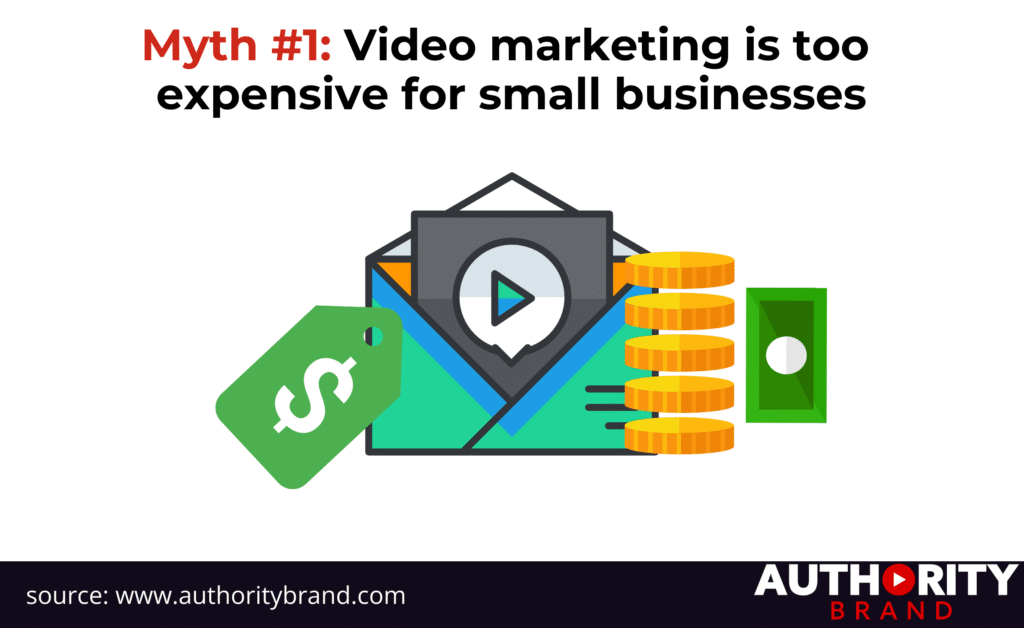
Myth #1: Video marketing is too expensive for small businesses
When a small business owner hears “video marketing,” their first thought may be of slick corporate productions with glitzy graphics and huge budgets. The comparatively low-fi video then feels second-rate and futile. However, this belief assumes high polish universally boosts engagement when the opposite is often true.
HubSpot discovered that articles with boring stock photos garnered almost 2.5x more time on the page than flashy images. Why? Visually overproduced content tends to look generic and less trustworthy. Viewers perceive polished perfection as less relatable and authentic. Meanwhile, candid, conversational videos in everyday settings feel more intimate and genuine.
Popular YouTubers rarely use advanced equipment, sets, or editing compared to traditional media. Their unpolished style mirrors honest vlogs, and TikTok-style content audiences prefer. If poor lighting/audio undermines viewability, elaborate production values rarely make/break small business video success.
The takeaway? Focus first on value-driving content conveyed naturally. Production polish secondarily augments quality messaging. Character and authenticity attract loyal audiences more than just slick style absent substance.
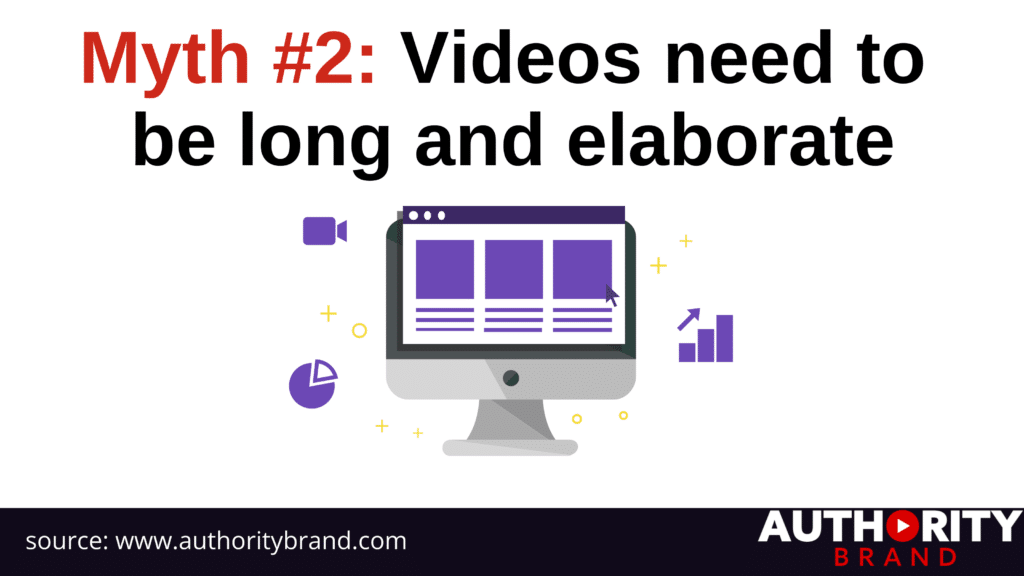
Myth #2: Videos need to be long and elaborate
Another assumption is that an educational/promotional video must utilize a high runtime, exceeding 5+ minutes, to cover critical details thoroughly around an offering. However, data reveals that a more extended form rarely optimizes engagement.
Viewers today have remarkably short attention spans. Between 2000 and 2013, Microsoft found that the average human attention span decreased from 12 seconds to 8 seconds. Shorter-format videos aligned with modern consumption patterns see substantially higher completion rates. Social further showcases preference for brevity – over 50% of the most shared Facebook videos are under 2 minutes.
Trying to overstuff complex details into a single, lengthy video tends to lose viewers. A more effective strategy breaks information into short, focused videos targeting specific user segments and goals. For example, an intro overview video followed by a technical specs deep-dive.
The takeaway? Serve bite-sized content for the TikTok age. Think multiples in a series vs. one overly long piece. Match styles and runtimes viewer behaviors.
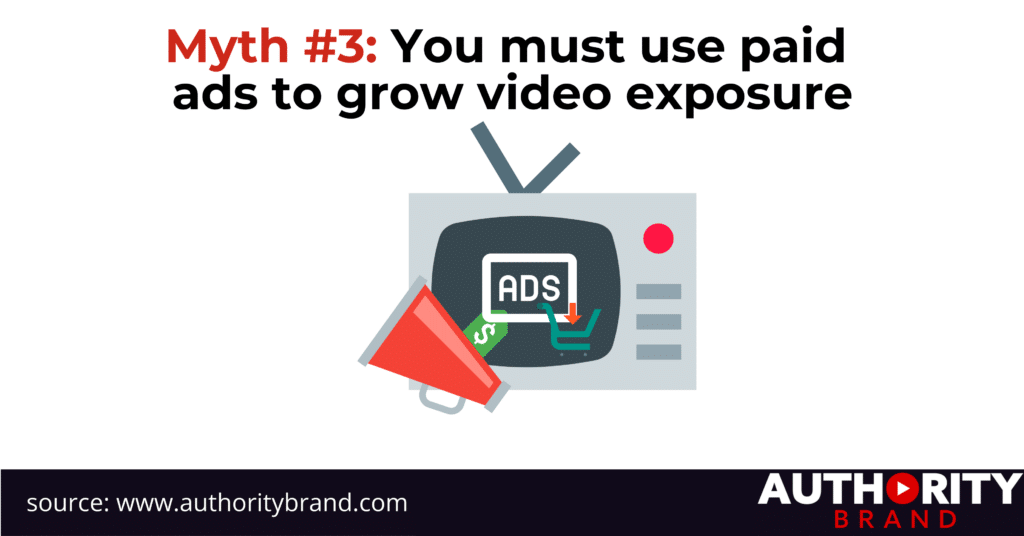
Myth #3: You must use paid ads to grow video exposure
When considering distributing marketing videos, a natural assumption arises that you must invest heavily in paid ads for the necessary reach. Organic promotion alone seems ineffective when competing creator content dominates platforms like YouTube.
However, while paid ads accelerate viewership, they rarely build deep user connections or loyalty crucial for stable growth. When the budget shrinks, attention and traffic soon follow. More impactful fostering niche communities through valuable content and engaged cultivation without ad dependency.
For example, significant brands see bottom-funnel conversions from YouTube videos shared for years since creation. Why? Content targets specific buyer needs and journeys. Views compound gradually by providing enduring utility for a clearly defined audience segment. Continually nurtured communities grow into evangelists.
Patience allows organic growth to be sustained better than artificial temporary ad spikes. Take the Amish Barn Builder, who casually shares woodworking tips on YouTube and slowly gathers a sizable following. Years later, niche loyalists still reference his impact by listening to ExactTarget podcasts.
The takeaway? Think long-term and target understanding precise viewer needs over immediate vanity metrics. Helpful community building accrues over time.
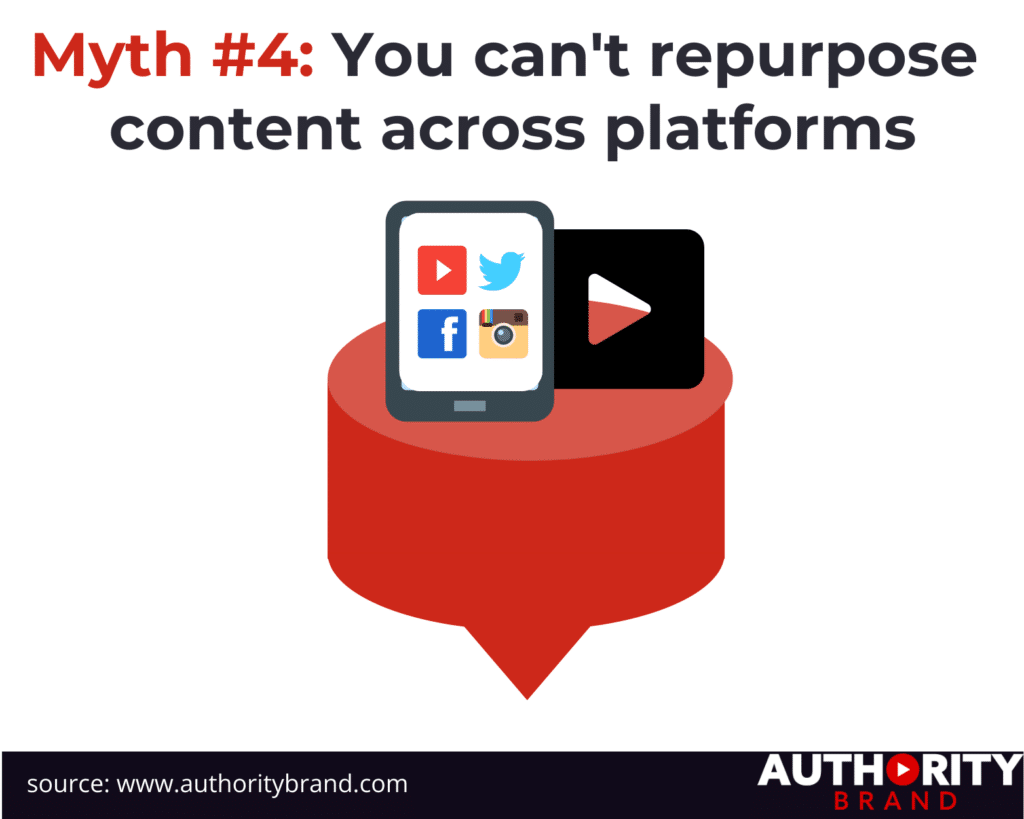
Myth #4: You can’t repurpose content across platforms
Creative paralysis often emerges when producing original, platform-specific videos for each growing social network. Tailored formatting/styling for YouTube, TikTok, Instagram, etc., needed to play to unique user expectations.
Certainly, tweaks help content match particular networks’ look, feel, and functionality. Yet, despite the site, an undercurrent of deep human needs and emotional drivers remains surprisingly consistent. Rather than siloing marketers into content redundancy, embracing everyday needs enables informed repurposing.
For example, leading B2B brands repurpose highly scientific product demo footage across networks. They spotlight differing angles based on the platform – usefulness on YouTube, lifestyle integration on Instagram, and customer testimonials on LinkedIn. However, the same core visual assets provide the foundation while saving resources.
Even significant networks get in on repurposing. Netflix anticipates key scenes shared cross-platform as viral marketing after airing. Value remains derived from compelling content creatively reimagined for new contexts vs. constantly remaking from scratch.
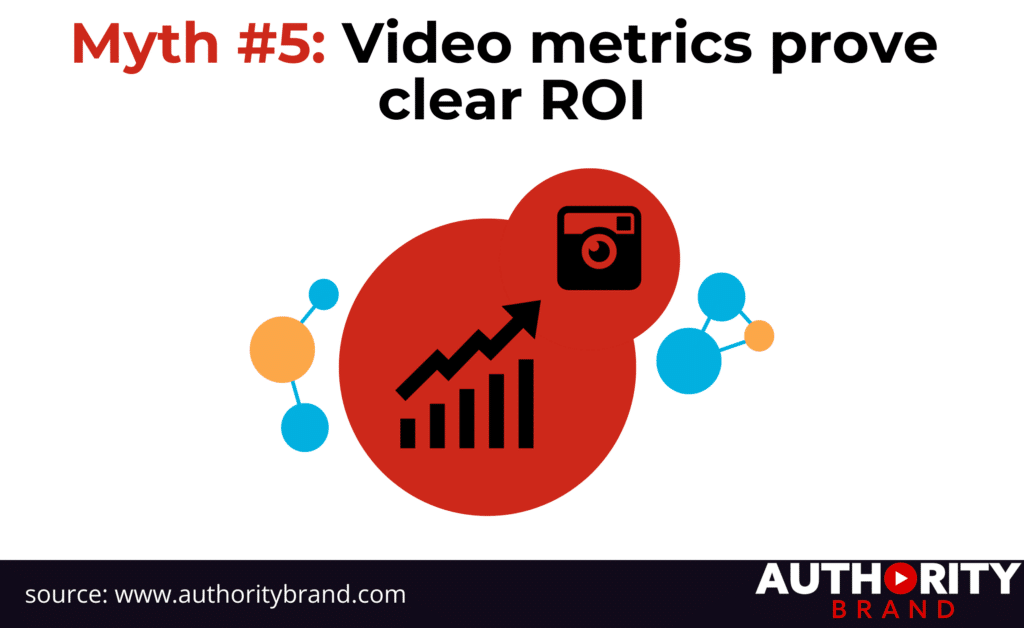
Myth #5: Video metrics prove clear ROI
As video marketing grows, pressure mounts on demonstrating tangible ROI. Vanity metrics like views, comments, and shares seemingly validate success, but gauging a video’s financial return proves slippery. Unlike direct e-commerce, the buyer journey contains many stages. Few individual videos precipitate immediate sales despite high engagement. Still, uncertainty persists on what benchmarks best indicate progress.
Resist over-indexing on any single video’s performance. Consider blending short-term reports and long-term buyer intelligence. Layer in survey, focus group, and interview data on how video content assisted the path to purchase. Gradually, a more accurate mosaic emerges on ROI. Accept some ambiguity while gathering multiple inputs.
The takeaway? Assess holistic sales funnel contributions using quant and qual data over fixating daily video clicks. Account for complexity in buyer journeys across touchpoints.
Navigating Misconceptions and Mastering Best Practices for Compelling Digital Content
Video content is the chameleon of digital marketing, with the ability to adapt to any situation and context. Its dynamic and emotional nature captures the audience’s attention, making it a unique medium that resonates with modern consumers. But, with the recent surge in popularity, some common misconceptions about video marketing could lead to ineffective strategies. Only by understanding the best practices and nuances of this medium can marketers unleash their full potential and create compelling video content that delivers the expected results.
Frequently Asked Questions:
Q: What equipment do I need to create video content?
A: A basic smartphone or consumer-grade camera,,, tripod, microphone, and ring light,, can produce quality DIY business videos. For professional polish, invest in editing software like Camtasia or Filmora.
Q: How much should my video marketing budget be?
A: Aim to invest 10-20% of your marketing budget into video efforts. Allocate portions strategically into initial equipment/software, video ad spend to amplify reach, and production of an ongoing content series.
Q: How do I track the performance of my video marketing?
A: Leverage each platform’s built-in analytics to monitor meaningful metrics like views, completion rates, clicks, conversions, watch time, subscribers gained, etc. These valuable insights can help you improve and enhance your video strategy.
Q: What video types should I create?
A: Start by developing videos aligning with your business goals, whether brand awareness, lead generation, or sales. Standard video formats include demo product videos, educational tutorials, customer testimonials, thought leadership interviews, promotional ads, etc.
Q: How often should I be publishing video content?
A: Ideally, aim to publish 1-2 new video assets per week. This gives you adequate time for proper production while pushing out content frequently enough to continually hook an audience’s interest.
Elevate Your Brand with Authority Brand
Are you interested in taking your brand to the next level? Look no further than Authority Brand! Our team is ready to establish and increase your brand’s market authority. Don’t wait any longer! Contact Authority Brand today to take the first step toward creating a robust and influential brand. Let’s work together to establish your brand as a leader in the industry! Contact us today and learn how we can help!







